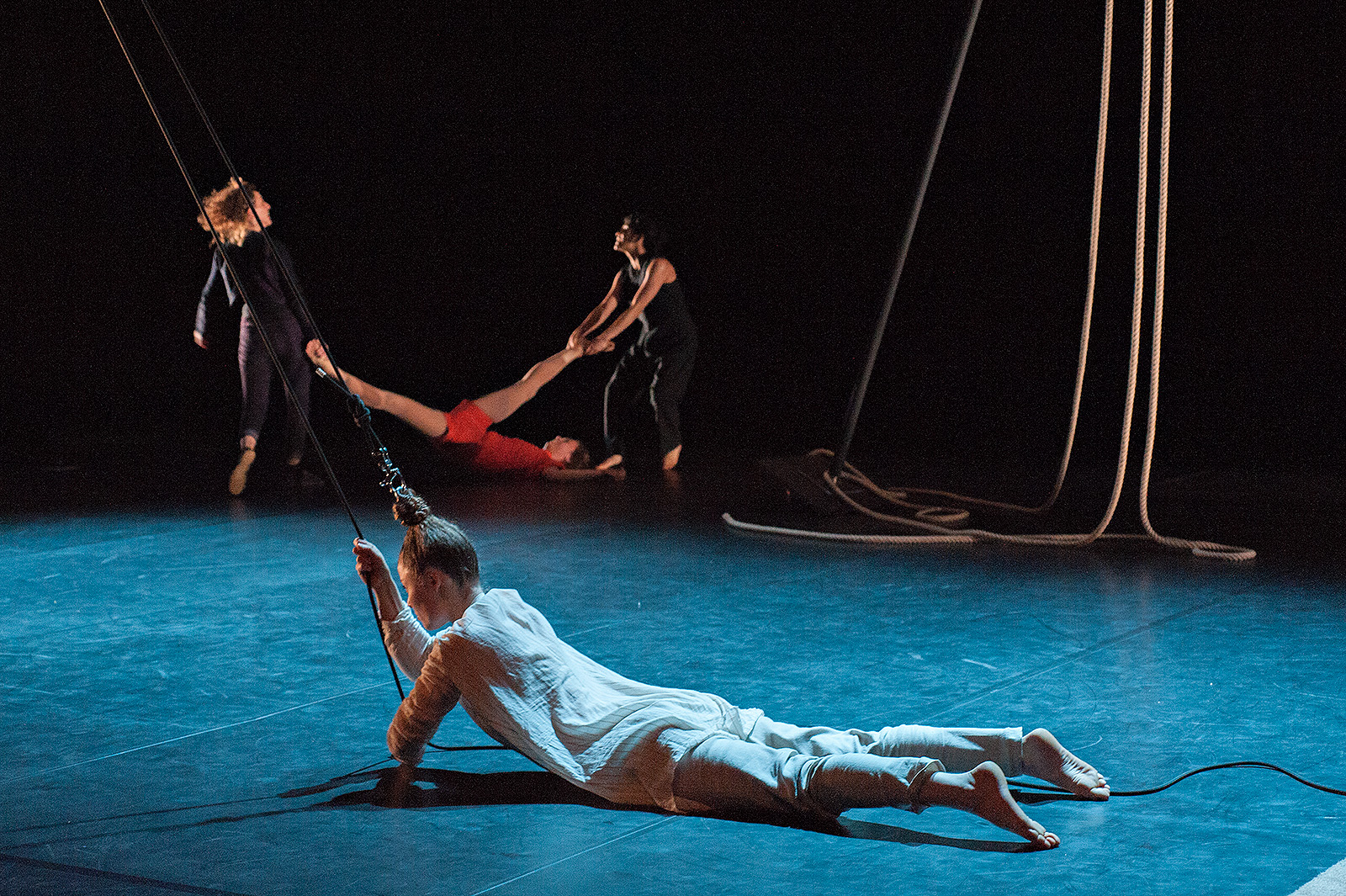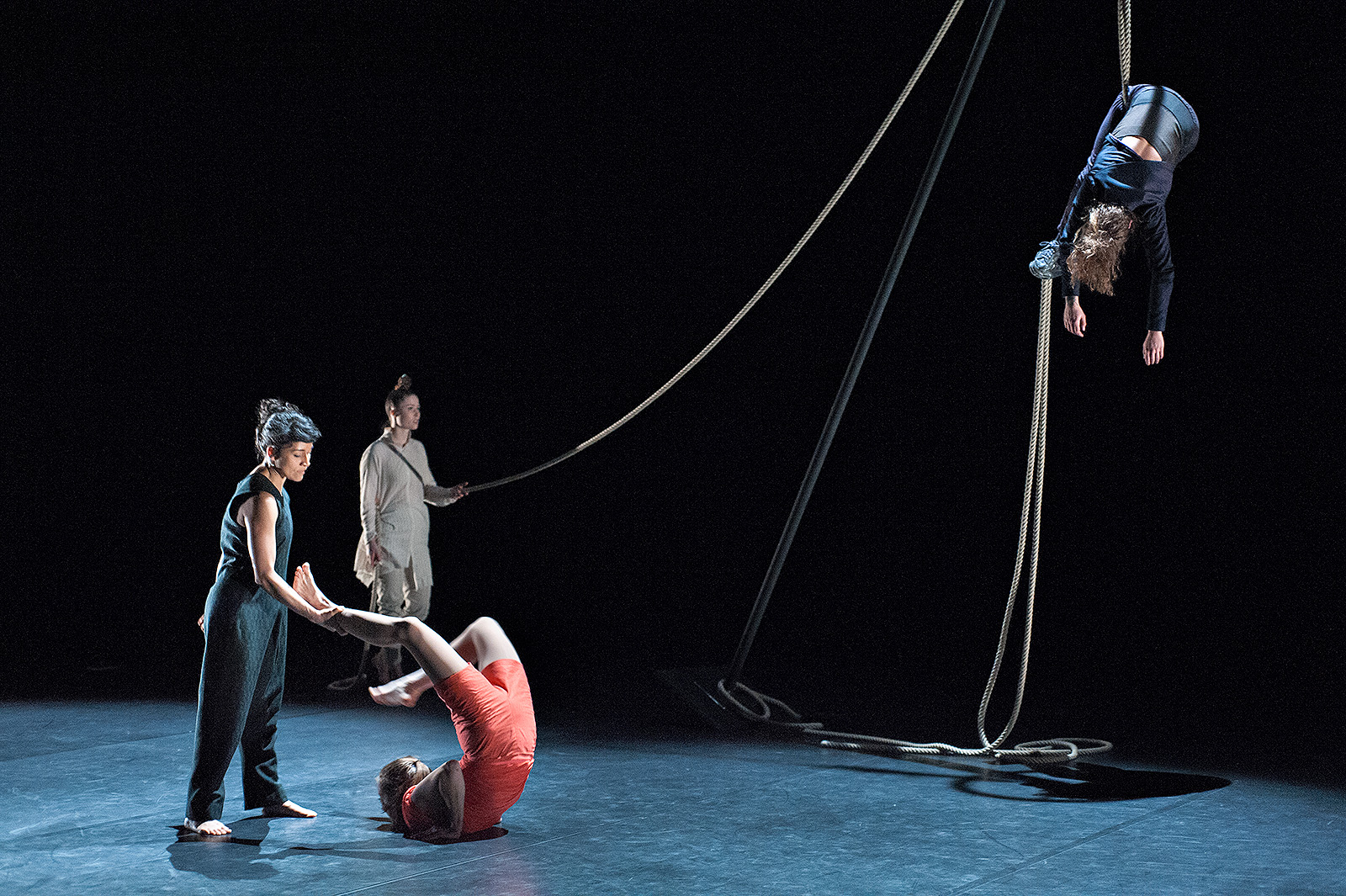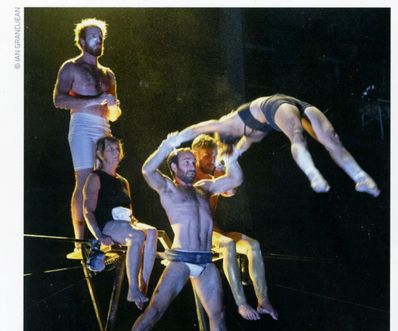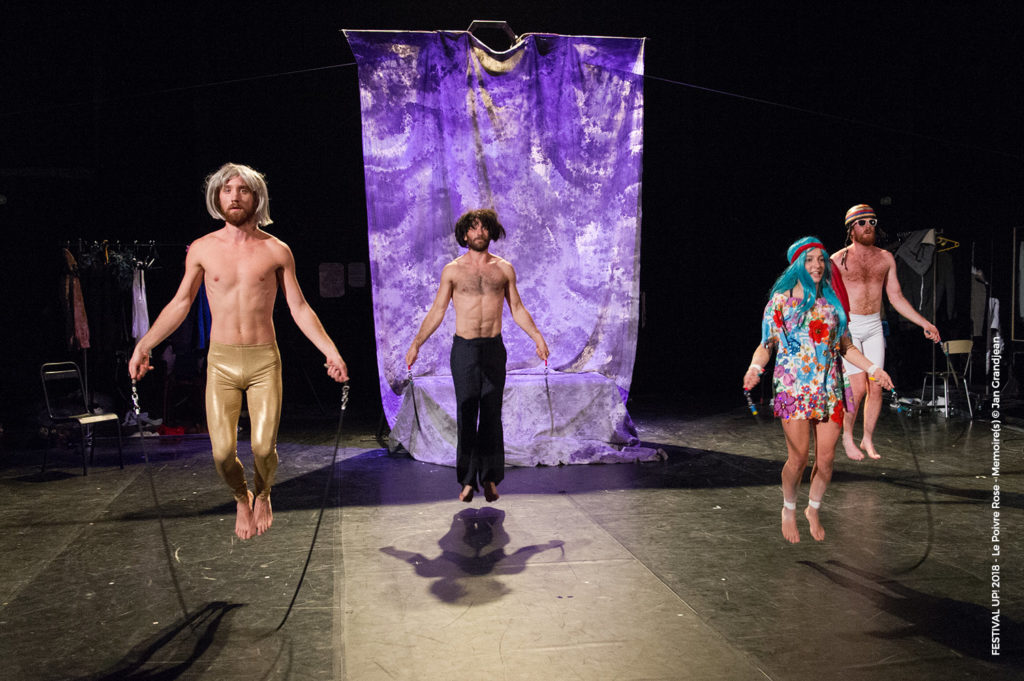A Picture of Circus in Brussels – Part One
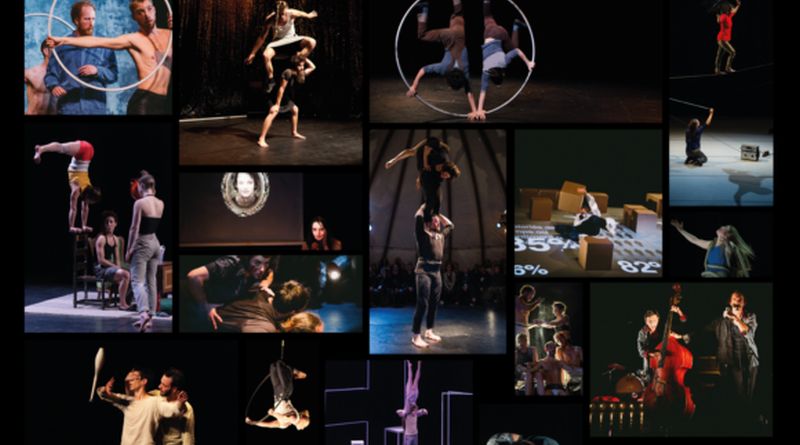
Brussels is positioning itself to be one of the main circus centers of Europe, a distinction which is only enhanced by recent growth in the sector, by its diversity and by the institutions and leaders in circus who are expanding their purview, including ESAC and Espace Catastrophe (both of whom are enlarging their facilities to accommodate). It’s no surprise then, that with such a large venture occurring, Espace Catastrophe (also the organizers of FestivalUP), worked in conjunction with Circostrada to bring the Fresh Circus#4 seminar to Brussels this March. 450 plus professionals that were in attendance the first week of the festival where organizers also announced the yearlong focus CIRCUS initiative in Brussels during 2018/2019.
The activities during Fresh Circus#4/FestivalUP ranged from professional workshops, to luncheons and tours and of course, the main events themselves, the 30 shows which took place over the 12 days of the festival, showcasing an array of international artists who were largely based in Belgium. Circus Talk was pleased to be in attendance as part of the INCAM network, participating in the Fresh Circus#4 workshops and attending shows. We have a sampling of reviews for the some of the shows we attended:
Persona— Naga Collective
“Do you love me”?” “Always.” “Even when I’m stupid?” “Even when I’m annoying?” “Even when I’m frustrated?” The questions echo those of many young women as they navigate their boundaries in relationships. And although Naga Collective is willing to visit these unpleasant and annoying aspects of relationships through the medium of circus, they don’t get stuck there– opting also to show the first blush of love as it unfolds with a dance and partner acro, the tenderness of friendship as hair hanger Mari Stoknes’s hair is unwound and her personality set free–and the aloneness of existence that no friendship can assuage—by hanging precariously from a wire while everyone else is absorbed in their own problems.
Brussels-based Naga Collective premiered their show Persona on opening night of the festival in what they say was a 2-year-long creation process. Like many of the shows in the festival, it had both a multicultural and multi-disciplinary perspective to share, with Stokens hailing from Norway, pole artist Viola Baroncelli from Italy, contortionist and hand balancer Jatta Borg from Finland, and acrobat/dancer Maria Jose Cazares from Mexico. It began with a tea party among four squabbling friends that quickly turned dada as it got stuck on a precise repeat then distilled in to its finer parts as their hour on the stage unfolded—unraveling the collective spirit and showing the elements of each complex relationship through the intense physicality of circus. Love, anger, control, co-dependence and vulnerability were on display as each woman became part of a duo with another then retreated to reflect by seamlessly transitioning to exploring her own craft with a solo, with Baroncelli perching out of reach on Chinese pole, Borg rolling and flopping across the stage with improbable contortion and Cazares delivering a startling, thrumming acrodance.
In the ensemble moments, besides conversation and squabbling, there was also humor and a healthy dose of headbanging, but the circus in the show doesn’t fall short of metaphors—the ensemble’s willingness to delve deep in to a concept often in counter-intuitive ways, such as exploring tenderness with acrobatics, or digging in to abandon and the power structures of relationships with contortion (you haven’t seen contortion until you’ve seen a ragdoll contortion act). But it’s clear that circus is not the goal of this circus so much as demonstrating how women do circus in such a distinct and vibrant way. There are no displays of strength or dominance. There is no dehumanization or shaming of the other. There are no social hierarchies being paraded about and no sense of competition or victimization to simplify the plot. Instead, there are moments of pure abstraction, madness and chaos to shock us out of our complacency with the simple acts of physicality.
For example, Persona exposes the objectification many women feel simply by highlighting the cultural importance of hair to us—for a long sequence in the show, each performer embraces anonymity by hiding behind their hair until we forget what they look like. Another example of how they do things differently is through partner acrobatics, a discipline whose propensity to offer drama is often appropriated to display either cliched love or violence. Naga Collective’s approach is refreshingly honest. They take the beat and breaths required to show instead how vulnerable we are as humans. How caring we can be towards one another, not just as we hold and support, but also as we lean, fall and crush each other under shared burdens. This access to their vulnerability made Persona often a moving experience–although upon occasion the show wandered into lengthy outbursts that detracted from the overall effect. To be sure, this is the human condition, but women have some unique perspectives to share on it, and to see them have the stage to do it in this nuanced and non-posturing manner was empowering.
[Ma] –Le Phare
Like so much of today’s circus, it began with a spare stage. Only a Chinese pole and two men (Nilda Martinez and Christian Serein-Grosjean) jumping rope, perhaps part of their warm up before the games begin. Set up as a sort of boxing match complete with a bell rung by the third artist, the musician, to indicate when the round has ended, pole artist Nilda Martinez and juggler Christian Serein-Grosjean set off an exploration of their disciplines together, often mingling, sometimes separating and even occasionally switching back to the sports of their youth, akido and fencing, to contrast it with their current methods of organization, aka circus.

What makes [Ma] so interesting to experience is the thoroughness of their research and their willingness to turn their individual arts in to a sophisticated dance/circus/sports mash-up which when combined with the vibrant live score (produced by musician Noe Voisard who is visible from the stage) created a trance-like quality to the show. Martinez & Serein-Grosjean spend much of their time plummeting in to their discipline, having set up a simple puzzle that gets explored over and over. What happens if I leave this sword and club leaning on the pole? Can I catch it if it falls? If I am this far away? If I am further? Meanwhile, the partner to the puzzler is spurred on to create his own puzzle, and to improve upon the game. A known trope in circus, but especially in juggling, is pushing each motion to its limit and then modifying it, creating a pattern of movement that is so abstract that it becomes dance. Yet somehow Martinez & Serein-Grosjean transcend this trope by inviting the audience to live vicariously through their thoroughly precise and enjoyed motions.
They crossed their genres often, climbing the pole, catching a club from every point on the pole, then doing it one handed, then no handed, the one legged, always upping the virtuosity, testing human capacity for adaptation and cooperation. It’s a powerful metaphor for the tiny but steady adjustments and progressions humanity must have made on a daily basis to have us arrive at a place in time where we can then sit in a black box together and watch people abstractly relay their own version of struggle against obscurity in the name of progress, and all by having a mock sword fight. Le Phare does this well, largely because of the unique combination of simple tools (only one juggling club is manipulated for example) and their complex interactions between movement, music and discipline. Although it is ostensibly a competition, it is one done lightly, with brotherly affection for one another by artists who spur each other on to succeed and who step in to redirect each other when the work takes over the person and leaves them spiraling, suddenly pointless and lost in the game itself.
Memoire(s)– Le Poivre Rose
Memoire(s) is a circus cabaret full with a colorful aesthetic that delights most when fully embracing kitsch but which feels incongruent with the theme of memory loss which it explores. But Memoire(s)’ identity crisis runs deeper than its theme. The five circus artists fortunately rescue the hole-filled plot by proving their acting ability along with their circus skills, always embodying their contemporary clown character, even while swinging from an aerial rig in drag (Amuary Vanderborgh) or hooping like an army recruit (Thomas Dechaufour). One of the most charming aspects of the show is its blending together of dance, theater, comedy and circus in surprising ways, even if the circus arts themselves often feel incidental rather than integrated. Unfortunately, the female characters also are treated incidentally, from the wife figure who is lost when her mate disappears, to the burlesque woman who is abused by her partner, and to an aloof, dominatrix-like woman (Antoinette Chaudron) whose imposing distance from the cast does create a comic tension, busying herself with eliminating each person’s memories, perhaps a ‘mother time’ figure but one who is portrayed as sexy rather than as a more fully realized type of power figure. To be fair, all of the characters are stereotypes and this choice may have been a deliberate means of exploration of a time gone by done in caricature as a statement. If the roles played are historical and not exactly empowering, the injustice is lightened by the whole company’s stellar comedic timing, particularly Marine Forteau whose clowning always hits the mark.
The time changes in the show seem random, and it is hard to identify a sense of kinship among the characters as they busily undertake their many tasks on stage. Nevertheless, by exploring old personalities via snapshot and cleverly incorporating some steampunk photographic tech and old film sound, Memoire(s) keeps the audience riveted. The end result is that the show feels like a themed, absurdist cabaret with lots of costume changes, soundscapes and lip syncing. The most impactful moment in the show is the last scene when the artists are finally all together and in harmony–the comedy and the connection all line up on the Korean cradle in a hilarious and dramatic orgy of chalking each other up before the astounding climax of the Korean cradle act with Forteau and Castells.
Related content: A Picture of Circus in Brussels, Part Two.
Featured photo courtesy of FestivalUP
Editor's Note: At StageLync, an international platform for the performing arts, we celebrate the diversity of our writers' backgrounds. We recognize and support their choice to use either American or British English in their articles, respecting their individual preferences and origins. This policy allows us to embrace a wide range of linguistic expressions, enriching our content and reflecting the global nature of our community.
🎧 Join us on the StageLync Podcast for inspiring stories from the world of performing arts! Tune in to hear from the creative minds who bring magic to life, both onstage and behind the scenes. 🎙️ 👉 Listen now!
